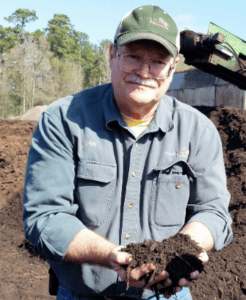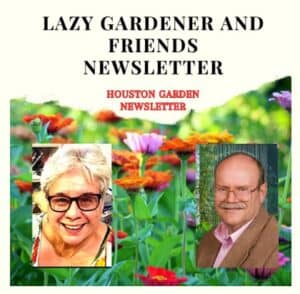 Nature’s Way Resources is proud to produce & email you this free weekly newsletter. We have no ads, but sponsors do graciously help support this project as a public service. Please note their names below & show your gratitude for this free service by patronizing their businesses! To become a sponsor, call (936) 273-1200
Nature’s Way Resources is proud to produce & email you this free weekly newsletter. We have no ads, but sponsors do graciously help support this project as a public service. Please note their names below & show your gratitude for this free service by patronizing their businesses! To become a sponsor, call (936) 273-1200
Nature’s Way Resources owner John Ferguson, “The Lazy Gardener” Brenda Beust Smith and Pablo Hernandez welcome your feedback and are so grateful to the many horticulturists who contribute their expertise
Click here to join our email list
CLICK HERE for PDFs OF PAST LG&F NEWSLETTERS
“What’s in a name? That which
we call a rose by any other
name would smell as sweet”
“ROMEO AND JULIET” by WILLIAM SHAKESPEARE

‘SUNNY SKY’ Nroses adorn top of Houston Rose Society
website which is loaded with help growing roses
BY BRENDA BEUST SMITH
MUCHO HELP WITH ROSES, below, but first, maybe I should rename this column “The Chaos Gardener’? That’s the predicted leading horticulture trend this summer — at least according to now-202-year-old Better Homes & Garden magazine. (It was originally called “Fruit, Garden and Home magazine. Who else would tell you these things?)
THE CHAOS GARDENER, according to BH&G’s CORI SEARS, promotes a haphazard, laid-back approach over meticulous garden planning. Throw those leftover seed packs (flowers, fruits, vegetables, etc,) all helter-skelter around the yard (or selected spots) to see what takes! (Click link above for full story)
Who knows, maybe you’ll get a natural-looking garden that teems with life and plenty of variety! Chaos gardening may save you a lot of time and energy! (Or, maybe not!). Whole yard or few beds: your choice!
(Not to brag, but this has been MY ‘Lazy Gardening’
approach for 60 years! See bios below calendar!)
IN OUR SPOTLIGHT TODAY: ROSES! Houston Rose Society is the largest local rose society in the United States. If you have questions about your roses or want to try them, first read HRS’ KAREN GERLACH, SUSAN KELLY & GAYE HAMMOND’s SPOTLIGHT ARTICLE below.
PS. Those gorgeous (NAME????) roses at top are at the top of HRS’ homepage!

REALLY INTO BUTTERFLIES?
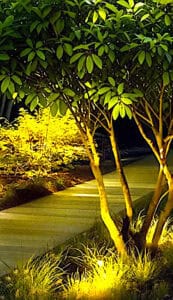 NIGHT GARDEN ENJOYMENT starts now! But, be careful, warns DARKSKY INTERNATIONAL. Excessive use of … artificial light sources …can disrupt natural mating patterns and migratory routes for birds, bees, bats, and turtles, among others . . . High-wattage blue lights in particular can disrupt natural mating patterns and migratory routes for . . . birds, bees, bats, and turtles, among others.” Full report by Emily Latimer in Cottage Life magazine
NIGHT GARDEN ENJOYMENT starts now! But, be careful, warns DARKSKY INTERNATIONAL. Excessive use of … artificial light sources …can disrupt natural mating patterns and migratory routes for birds, bees, bats, and turtles, among others . . . High-wattage blue lights in particular can disrupt natural mating patterns and migratory routes for . . . birds, bees, bats, and turtles, among others.” Full report by Emily Latimer in Cottage Life magazine
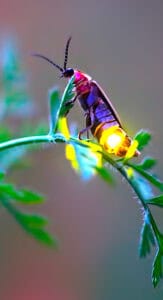 SPEAKING OF SPARKLING LIGHTS, If you prefer yours alive & kickin’, World Firefly Day is celebrated annually during this coming weekend. Here in Texas (best to know your own among the 2,400 species (also called lightning bugs) worldwide. Lampyridae (beetle family) occupy every continent except Antarctica. Best to known your own.Texas-based, nonprofit Firefly Conservation & Research was founded in 2009 by Ben Pfeiffer, a recognized firefly researcher and Texas-certified master naturalist..
SPEAKING OF SPARKLING LIGHTS, If you prefer yours alive & kickin’, World Firefly Day is celebrated annually during this coming weekend. Here in Texas (best to know your own among the 2,400 species (also called lightning bugs) worldwide. Lampyridae (beetle family) occupy every continent except Antarctica. Best to known your own.Texas-based, nonprofit Firefly Conservation & Research was founded in 2009 by Ben Pfeiffer, a recognized firefly researcher and Texas-certified master naturalist..
Photo courtesy of Fireflyersinternational.net/world-firefly-day)
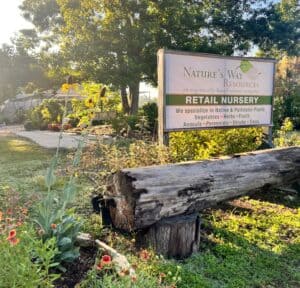 ATTN. GARDEN/PLANT GROUPS — Nature’s Way Resources offers free guided tours of NWR’s extensive nursery/soil/mulch facilities for garden clubs, plant societies and other plant-oriented, organized groups. As usual, NWR’s now-expanded meeting site is free to above groups. Reservations a must for both. Great time to visit!
ATTN. GARDEN/PLANT GROUPS — Nature’s Way Resources offers free guided tours of NWR’s extensive nursery/soil/mulch facilities for garden clubs, plant societies and other plant-oriented, organized groups. As usual, NWR’s now-expanded meeting site is free to above groups. Reservations a must for both. Great time to visit!
- SUBMITTING CALENDAR EVENTS?: For next upcoming newsletter, submit in exact format (see top of calendar below. Reformatting = delay)
Brenda Beust Smith’s column is based on her 40+ years as the
Houston Chronicle’s “Lazy Gardener” column, continuing sponsored by Nature’s Way Resources in 2013 — (lazygardenerbrenda@gmail.com)
Brenda’s column focuses ONLY on the Greater Houston Area
Spotlighting…
Houston Rose Society
A few most popular
summer rose questions
by KAREN GERLACH, SUSAN KELLY & GAYE HAMMOND
- I want to prune my roses. Is it too late? Avoid removing leaves from bushes when temperatures reach 95 degrees. Plants need those leaves working at breakneck speed to make enough food and regulate the plant’s temperature to make it through the brutal summer months.
- How much water do my roses need during the summer? When temperatures reach 95 degrees, roses need 2 inches of water per week. During droughts, salts build up in the root zone due to causes such as saline soil, water conditions, and granular synthetic fertilizers (which are composed of mineral salts). This salt builds up in the root zone and dehydrates the roots causing the bushes to wiggle in their planting spot, just like a loose tooth!
- My Rose leaves look distorted. Do I have Rose Rosette Disease? Not so quick! July through August is the peak time for chili thrips. Avoid fertilizing during these months as tender new growth leads to more chlle thrips! If you suspect Rose Rosette, please contact the Houston Rose Society for additional information and resources for confirmatory testing.
- I see webbing on my roses! What is happening? Spider mite damage peaks during the warmest months. If you see web-like material on your roses, check under the leaves for a small, pinpoint, barely moving insect, They pierce plant leaves causing their damage. They can be treated with a strong water spray to knock them off.
AND FOR THOSE WHO NEED PICTURES . . . Houston Rose Society’s GAYE HAMMOND adds the educational look at identifying rose challenges.(and she has a rose named for her!). Below, Gaye adds pictures and comments to further help gardeners.

No. 1 & 2: Asparagus-like growth on canes of hybrid tea roses. Canes may be completely slick and devoid of leaves/prickles; or may have a few pieces of small deformed foliage that is a fraction of the size of normal leaves.
No 3: This St. Patrick hybrid tea rose would normally have a 4 ½ inch bloom containing between 40 – 50 petals. Due to extensive damage by chlli thrips, the deformed bloom takes on more of the appearance of a daisy and is about the size of a half-dollar coin.
No. 4: With heavy infestation, seeing deformed foliage and canes containing dark lesions is common. Lesions may be black or brown.
Leaves decrease in size to 1/4th to 1/8th of an inch. Damage at this level normally appears at the top and sides of the plant canopy (where the tender new growth starts).

No. 5 & 8: Leaf lesions on the underneath sides of leaves.
No 6: Examples of the progression of leaf distortion from the same hybrid tea rose bush. The smallest and most distorted samples came from the top of the plant with the normal-sized leaflets at the bottom of the plant. Sometimes gardeners find leaf distortion caused by spider mites. Spider mite damage starts at bottom of the plant and works its way up. Chili thrips damage starts at top and works its way down.
No. 7: Examples of leaf veining from the same hybrid tea rose bush. The most distorted size leaflets with the most veining came from the top of the plant. Leaflets with the least veining came from the bottom of the plant.
NOTE from Gaye: If anyone thinks they have chlli thrips, they can e-mail photos to me at gayeh@LPM-triallaw.com.
John’s Corner
NEWS FROM THE WONDERFUL WORLD
OF SOIL AND PLANTS
Subject: Pollinators , Glyphosate and cancer
One of the most rewarding things about restoring this old farm is to watch how the pollinators have returned. When I purchased the farm, the soil was very degraded and not much life around and zero wildflowers.
Over the last 10 years I have worked to bring the soil back to life and have planted over 174 different species of trees and shrubs. Each with a distinct purpose in nature.
For example, Texas has 5 species of wild plums indigenous to it. Hence, I planted several of each of our native species. Several species have struggled while others have suckered and grown into colonies. One colony was full of yellow fruits when I was driving around yesterday.
The parade of flowers begins with the trees each spring starting with the white flowered fragrant Mexican plum and some redbuds, this is followed a week later by the red and yellow buckeyes. In another couple weeks the black locust and honey locust add their clusters of flowers. About the time they start to fade, the Rusty Blackhaw viburnum and Rough Leaf dogwood join the show. The Texas Mimosa (Mimosa borealis) with its pink and fragrant flowers joins the golden ball lead tree in its spring show. As we move into late spring the Catalpa’s join in with their large clusters of white flowers along with other red bud species and the Arroyo Sweetwood. Next the Silverbells and Desert Willows join in. With the spring rains the Texas rain lilies and cactus flowers dominate the landscape along with the milkweeds.
One of my surprises was Kidneywood (Eysenhardtia texana) as I had never grown it living in Houston. I planted two one-gallon plants and later found one growing wild on the property. I chose them since they were the host plant for the Southern Dogface butterfly.
They have proven very heat and drought tolerant and are moderate growers with zero care and one is now 10’ tall. They will flush several times a year with 3–4-inch white flower spikes that are very pretty.
My surprise was how many of our native bees from the ground dwelling to bumble bees nectar on the flowers.

Picture from the Internet
Another surprise was my buttonbushes. They have done well through heat and drought and total neglect and just keep blooming. I planted them near my lake as the seed pods in the fall are a favorite food for migrating ducks. It has been interesting how many bees, butterflies and other insects use them.
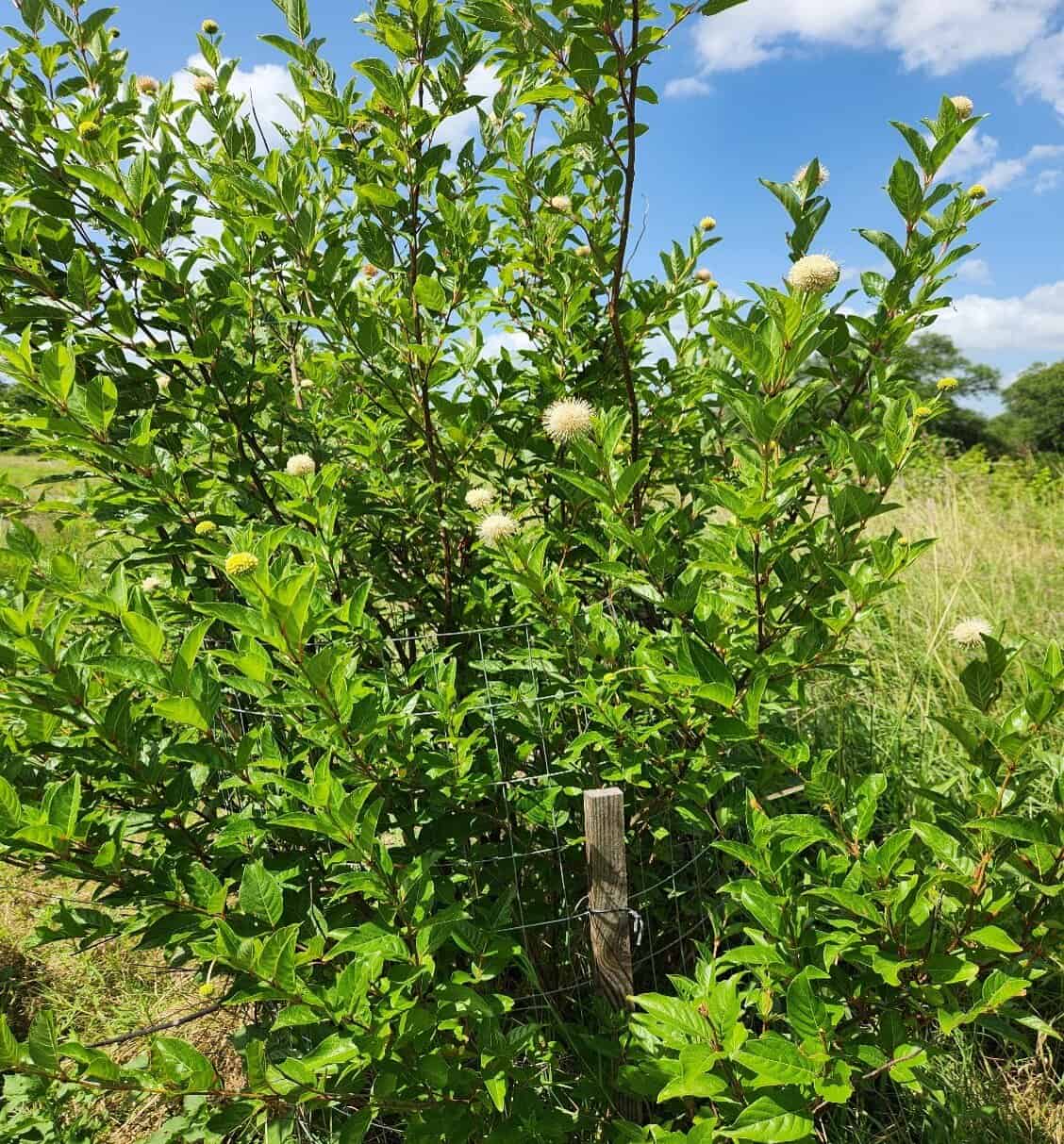
Driving around the property yesterday there were numerous patches of wild verbena, Blue Bells, Milkweed, Monarda and dozens of more species of flowers. It has been nonstop flowers since early February. Butterflies and insects everywhere. Each species of wildflower seems to have certain insects that favor it while some like the thistles are magnets for many species.
A new international study has found that glyphosate (Round Up) causes six of the most common cancers even at levels far less than legal standards. Journal of Environmental Health (2025).
This was part of the multi-institutional Global Glyphosate study being led by the Cesare Maltoni Cancer Research Center of the Ramazzini Institute in Italy. It is composed of many researchers and institutes around the world.
The Global Glyphosate study is the most comprehensive toxicological study ever conducted on glyphosate-based herbicides.
SPONSORSHIP
If you are interested in becoming a sponsor, please contact us at 936-273-1200 or send an e-mail to: lazygardenerandfriends@gmail.com
ABOUT US
BRENDA BEUST SMITH
WE KNOW HER BEST AS THE LAZY GARDENER . . .
but Brenda Beust Smith is also:
- a national award-winning writer & editor
- a nationally-published writer & photographer
- a national horticultural speaker
- a former Houston Chronicle reporter
When the Chronicle discontinued Brenda’s 45-year-old Lazy Gardener” print column — started in the early ’70s as a fun side-project to reporting, it then ranked as the longestrunning, continuously-published local newspaper column in the Greater Houston area. The name, she says, is not just fun, it’s true.
Brenda’s gradual sideways step from reporter into gardening writing led first to an 18-year series of when-to-do-what Lazy Gardener Calendars, then to her Lazy Gardener’s Guide book which morphed into her Lazy Gardener’s Guide on CD, which she now emails free upon request.
Brenda became a Harris County Master Gardener and, over the years, served on theboards of many Greater Houston area horticulture organizations. She hosted local radio and TV shows, most notably a 10+-year Lazy Gardener specialty shows on HoustonPBS (Ch. 8) and her call-in “EcoGardening” show on KPFT-FM.
For over three decades, Brenda served as Assistant Production Manager of the GARDEN CLUB OF AMERICA’S “BULLETIN” magazine. Although still an active broad-based freelance writer, Brenda’s main focus now is THE LAZY GARDENER & FRIENDS HOUSTON GARDEN NEWSLETTER with John Ferguson and Pablo Hernandez of Nature’s Way Resources.
A native of New Orleans and graduate of St. Agnes Academy and the University of Houston, Brenda lives in Humble, TX, and is married to the retired Aldine High School Coach Bill Smith. They have one son, Blake.
Regarding this newsletter, Brenda is the lead writer, originator of it and the daily inspiration for it. We so appreciate the way she has made gardening such a fun way to celebrate life together for such a long time.
About her column, Brenda says: “I don’t consider myself a ‘garden writer.” I started out 50+ years ago as a very lazy “gardening reporter.” I still feel that way today. I hope my columns inspire/help newcomers, but I do not write to them. I write to very experienced gardeners who want to expand their horizons.
JOHN FERGUSON
John is a native Houstonian and has over 35 years of business experience. He owns Nature’s Way Resources, a composting company that specializes in high quality compost, mulch, and soil mixes. He holds a MS degree in Physics and Geology and is a licensed Soil Scientist in Texas.
John has won many awards in horticulture and environmental issues. For years he represented the composting industry on the Houston-Galveston Area Council for solid waste. His personal garden has been featured in several horticultural books and “Better Homes and Gardens” magazine. His business has been recognized in the Wall Street Journal for the quality and value of their products. He is a member of the Physics Honor Society and many other professional societies. John is the co-author of the book Organic Management for the Professional.
For this newsletter, John contributes articles regularly and is responsible for publishing it.
PABLO HERNANDEZ Pablo Hernandez is the special projects coordinator for Nature’s Way Resources. His realm of responsibilities include: serving as a webmaster, IT support, technical problem solving/troubleshooting, metrics management and quality control. Pablo helps this newsletter happen from a technical support standpoint.
Download the Newsletter with Our Events Calendar Below!

